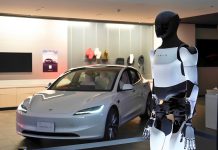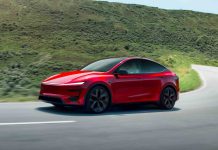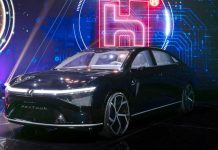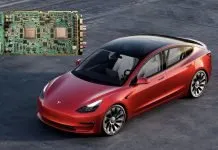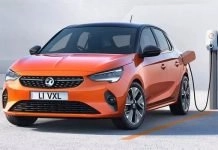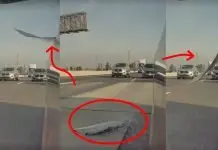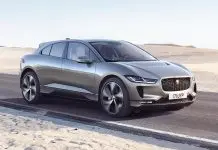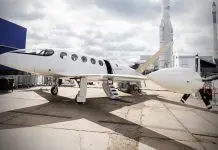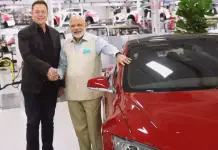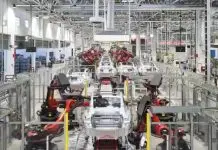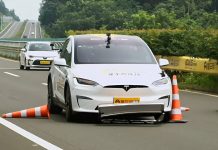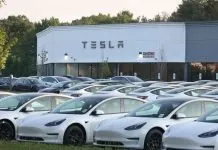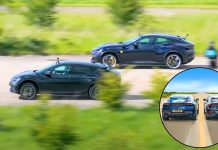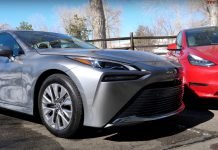Tesla, from long sticks to what they know best—or at least what makes them appear to know best. Tesla’s forever controversial camera-only self-driving approach has once again come under scrutiny after a recent test. In this test, a Tesla Model Y on Autopilot drove headfirst into a Wile E. Coyote-style fake road wall, highlighting the limitations of its vision-only system.
The test comparison of camera-only and LiDAR systems in various situations and driving conditions. What’s shocking is the shocking results that have again sparked a debate about how safe actually are autonomous systems. Here’s everything you need to know about it!
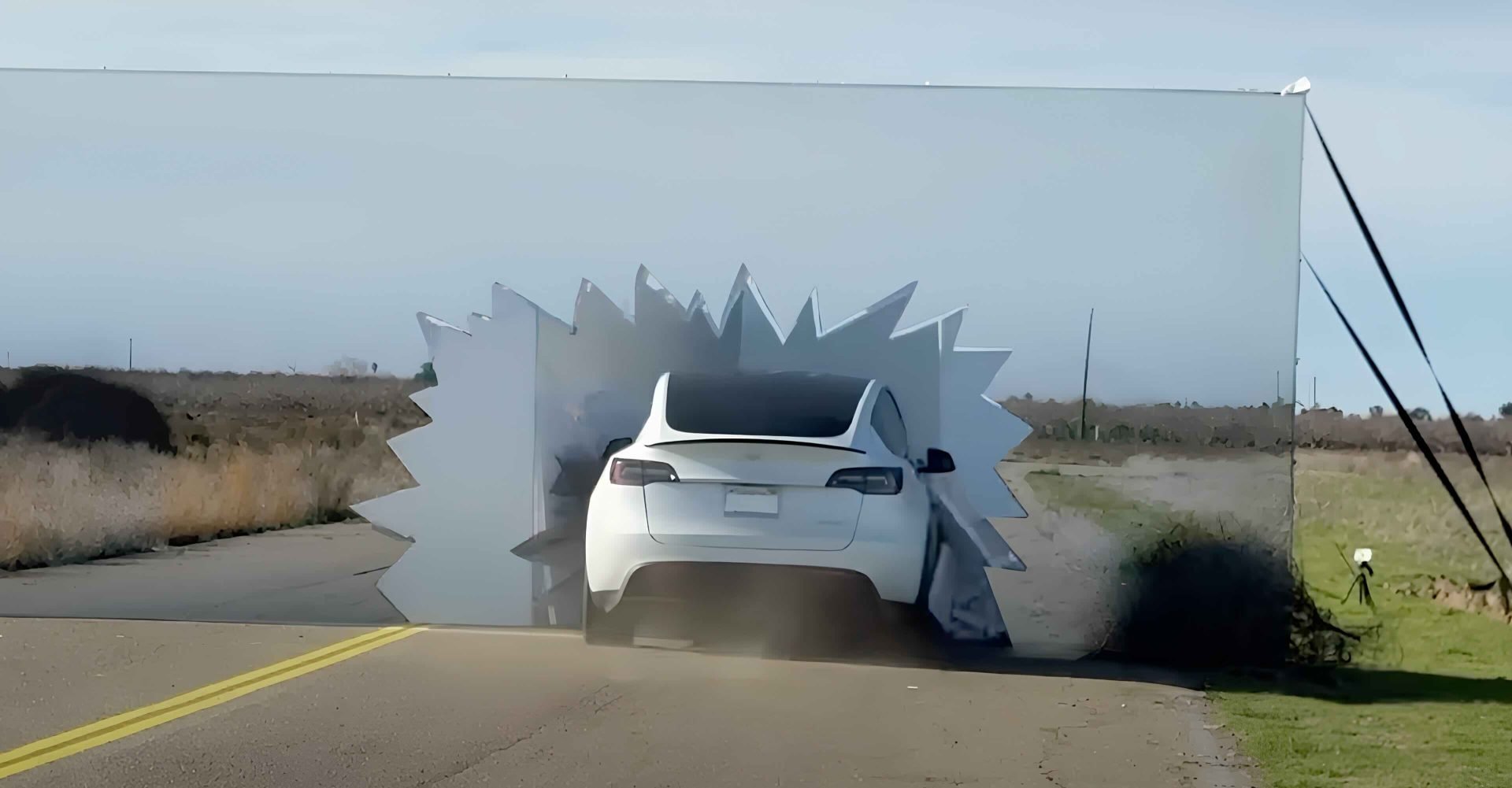
The Test: Cameras Vs. LiDAR
The test was conducted by the YouTuber Mark Rober who’s also a former NASA engineer famous for his eccentric viral videos based on science and other popular topics.
Rober’s interesting test featured a Tesla Model Y on Autopilot alongside a Luminar LiDAR system-equipped Lexus SUV. Both the vehicles were made to face a bunch of tests specially designed to evaluate their ability to detect and react to obstacles under different conditions.
First Test: Child On Road
One of the first tests involved a child mannequin that was made to suddenly appear in the path of both vehicles. Impressively, both the Tesla and the LiDAR-equipped Lexus were able to stop in time.
Second Test: Moving Child On Road
The second test was to check the reaction of both systems when the child mannequin moved on the road. The vehicle stopped even when the mannequin moved in the path of both vehicles.
Third Test: Dense Fog
The third test was to check the performance of both systems when faced with dense fog. The Tesla struggled to detect obstacles in thick fog while the LiDAR-equipped Lexus, on the other hand, was able to accurately “see” its surroundings.
Fourth Test: Heavy Pouring Rain
When placed in extreme rain conditions, Tesla’s camera sensors failed to distinguish obstacles reliably. The heavy water droplets and motion blur affected its ability to process the environment, whereas the LiDAR system continued functioning effectively, as it did not rely on clear visuals to detect objects.
Fifth Test: Blinding Lights
Bright lights were splashed to mimic the coming from oncoming traffic to see how well each system adapted. Tesla’s cameras surprisingly did perfectly fine even with the glare, without any blind spots. The LiDAR-equipped Lexus also maintained its performance, unaffected by the bright lights.
Sixth Test: Wile E. Coyote Fake Wall Test
The ultimate test of the series was the Wile E. Coyote-inspired fake wall designed to look like an open road. In a scene reminiscent of the classic cartoon, the Tesla drove straight into the illusion of an open road.
The vision-only system failed to recognize the painted wall as an actual obstacle. Meanwhile, the LiDAR-equipped Lexus detected the wall for what it was and stopped safely before impact.
Limitations of Vision-Only Autonomy
The failure of Tesla’s Vision-Only Autopilot system reminds us of the unignorable limitations of a camera-only approach to autonomy. Unlike LiDAR, which uses laser pulses to measure depth and create highly accurate 3D maps of the environment, cameras solely rely on visuals.
The problem with it is that it makes them susceptible to optical illusions, poor lighting conditions, and obstructions like fog or heavy rain.
One of the key concerns is safety.
Tesla’s Autopilot and FSD systems have been linked to numerous accidents, some of them fatal. Regulatory agencies, including the National Highway Traffic Safety Administration (NHTSA) and the Department of Justice, have launched several investigations into Tesla’s self-driving claims and the safety of its systems.
Moreover, this test raises questions about Tesla’s long-term autonomy ambitions. Tesla would need to work way harder with its AI-driven system if the company truly plans to completely remove steering wheels and pedals in the future.
Tesla Sticks To Vision Only
Elon Musk has been a vocal critic of LiDAR, calling it a “crutch” and “expensive and unnecessary.”
He has repeatedly stated that achieving full autonomy using only cameras and AI is not only possible but also the most scalable approach. However, some industry experts believe that Tesla’s reluctance to adopt LiDAR is more about optics and cost than technological viability.
Elon Musk’s Take On LiDAR
This vision-only approach has been made the champion strategy by Tesla. CEO Elon Musk argues that it mirrors human driving perception and will ultimately allow Tesla to scale its self-driving system more efficiently than competitors.
Admitting that LiDAR is necessary would mean Tesla may have to retrofit millions of existing vehicles with additional sensors—a logistical and financial nightmare.
Given that Tesla has already removed radar sensors from its newer models and deactivated them in older vehicles, a reversal on LiDAR would be a significant concession for Musk.
The Great Debate
Most automakers today are working on autonomous driving systems that are not limited to one technology but a combination of cameras, radar, LiDAR, and ultrasonic sensors. However, Tesla stays adamant that cameras alone combined with its bespoke neural network-based artificial intelligence are sufficient for achieving full self-driving capability.
This latest test sums up these concerns in an unusual style. One Reddit user commented on the video sarcastically pointing out Tesla’s recent “wins,” citing the chief safety officer’s resignation, halted Cybertruck deliveries, quality issues like panels flying off, and now this YouTube video.
For Tesla, this test shows they’re still far behind full autonomy as their systems remain at Level 2 autonomy, requiring constant driver supervision. Despite Musk’s highly ambitious claims of achieving Level 5 autonomy where a car can fully drive itself.
A perfect ten Self-driving EV under any conditions? Well, Tesla vehicles are far from reaching that milestone.
Bottomline
Companies like Waymo and Cruise use a combination of LiDAR, radar, and cameras, arguing that this multi-sensor approach is necessary for safer fully autonomous driving. Tesla’s insistence on a camera-only system places it in a unique but controversial position.
Whether Musk will eventually reconsider his love for a camera-only system remains to be seen, but as competitors advance with better sensors, Tesla risks falling behind in the race. What do you think?

